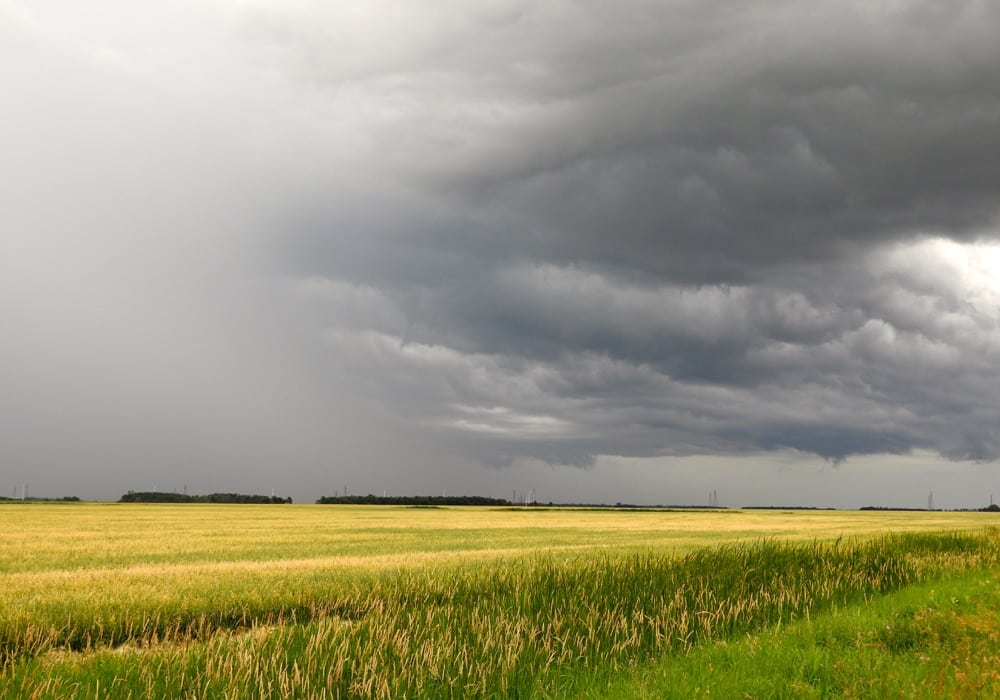As the calendar turned to April most of the Prairies looked like they were back in January with the snow cover and cold. Due to the La Niña weather event persisting for longer than some had predicted, portions of the Midwest and Southern U.S. remained extremely dry, while the Northern States, like the Prairies were under snow. All of this caused concerns for farmers as we headed into spring.
By mid-April, concerns about spring seeding delays were real for some producers in the southern Prairies and causing unease for producers across the Prairies in general.
Read Also

Gentle treatments for pain in the neck
Heading toward year-end, people unknowingly tense up against the cold and busyness, causing neck pain that can often be treated with appropriate support and gentle mobility, athletic therapist Kathlyn Hossack says.
Then we started to hear that the La Niña effect was fading, and along came the hot and dry May spring weather which allowed for an almost uninterrupted chance to get seeding done in near record time.
Timely rains across much of the Prairies in the first half of June helped to alleviate dryness concerns in most areas and get the crops off to a good start, not to mention the weeds and insect pests!
Who knows what the weather will be like throughout the summer.
How markets reacted?
Grain futures were at lows heading into the new year. Early spring weather concerns turned markets bullish as buyers became concerned about supplies. This gave speculators an incentive to jump into the markets to get in on a potential weather rally. The hot dry start to May allowed farmers to finish seeding quickly, but also fed a concern about dry ground, bringing more speculative activity to the grain markets.
Feed grain values were pushing steadily higher as pastures were not starting off well. The long snowy winter used up many producers’ hay and silage reserves to the point that some were starting to cull and sell off animals just in case the dry weather persisted.
June rains helped but pastures and hay crops were in poor condition so feed grain values have held up fairly decently until more rains fall and first hay was starting to be cut.
The major U.S. grain markets have fallen since the beginning of June when the rains started to fall. Our Canadian markets have followed, but it is more likely that the recently announced U.S. tariffs on Chinese goods and the reciprocal tariffs that China has put on U.S. goods, including soybeans, will have more impact on markets than the weather.
Uncertainty over NAFTA is fueling economic uncertainty in Canada and pushing our dollar lower. This will help to keep canola competitive with U.S. beans and maybe encourage China or other buyers to purchase more canola in the short term. This should help support futures values at current levels, but a shift in policy or elimination of a trade tariff could change this picture quickly.
Wheat futures have turned lower with the rains across the major U.S. growing regions. Crop concerns in other parts of the world are helping reduce the projected world carryout, which should be supportive for prices.
World economic uncertainty sparked by the imposition of tariffs and potential for full-on trade wars is not going to help things.
What can you do?
If the world economy goes into a recession, how will that impact different countries’ currencies? Will it impact their ability to be able to buy Canadian grains? If so, what will that do to grain prices here? If we can’t sell it abroad, our prices will have to drop so we stay competitive.
Many outside influences impacting markets right now would not traditionally be a part of grain market dynamics. But in today’s world we are seeing more and more of these events. Maybe this is going to be the new norm.
From a marketing perspective, it is going to be impossible to determine what next event or situation will happen that could influence grain markets going forward. Focus on what your numbers tell you. Market your grain based on your break-even numbers and profitability for your farm, as opposed to trying to guess when another tweet will come from the White House that might send markets off in who-knows-what direction.
















